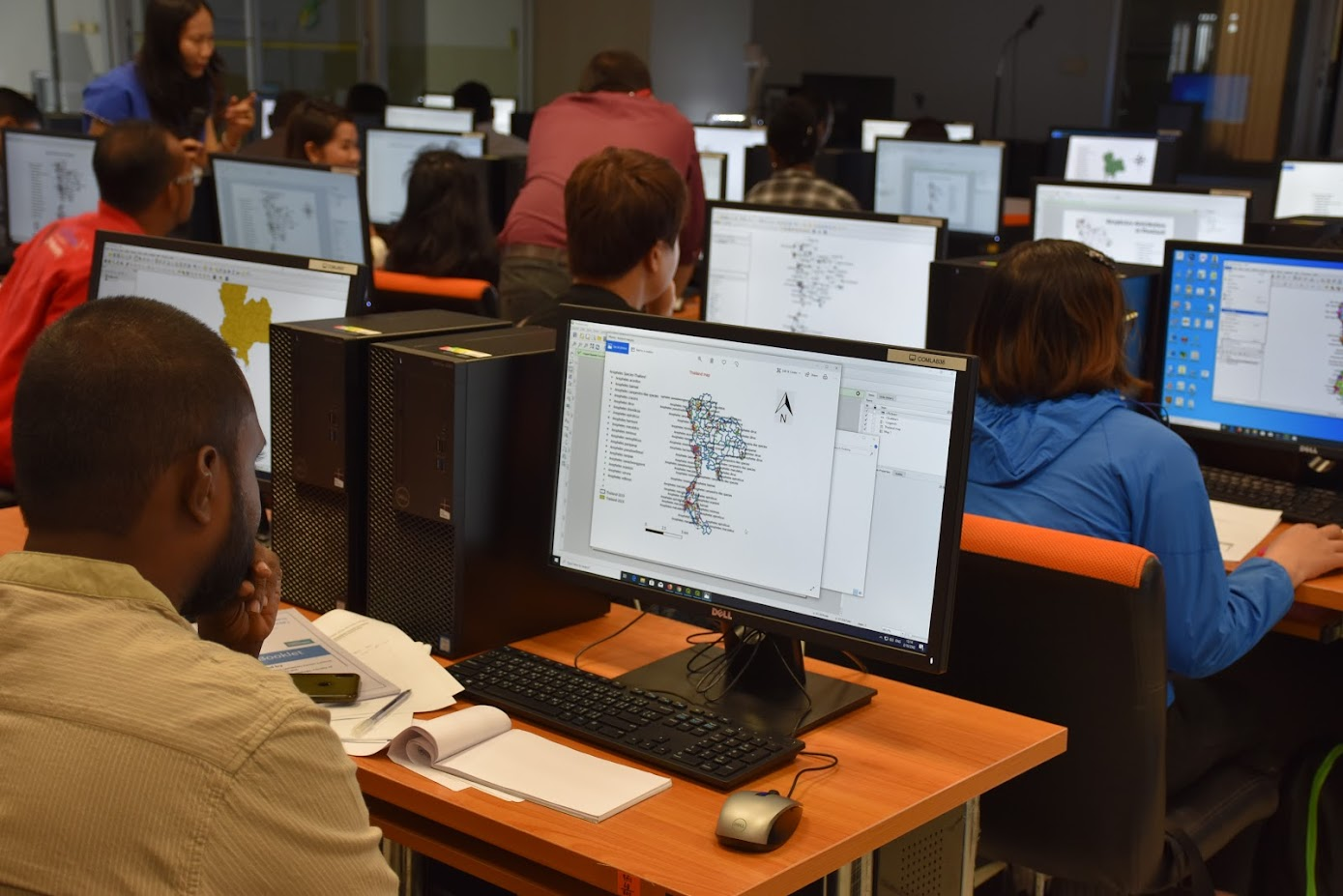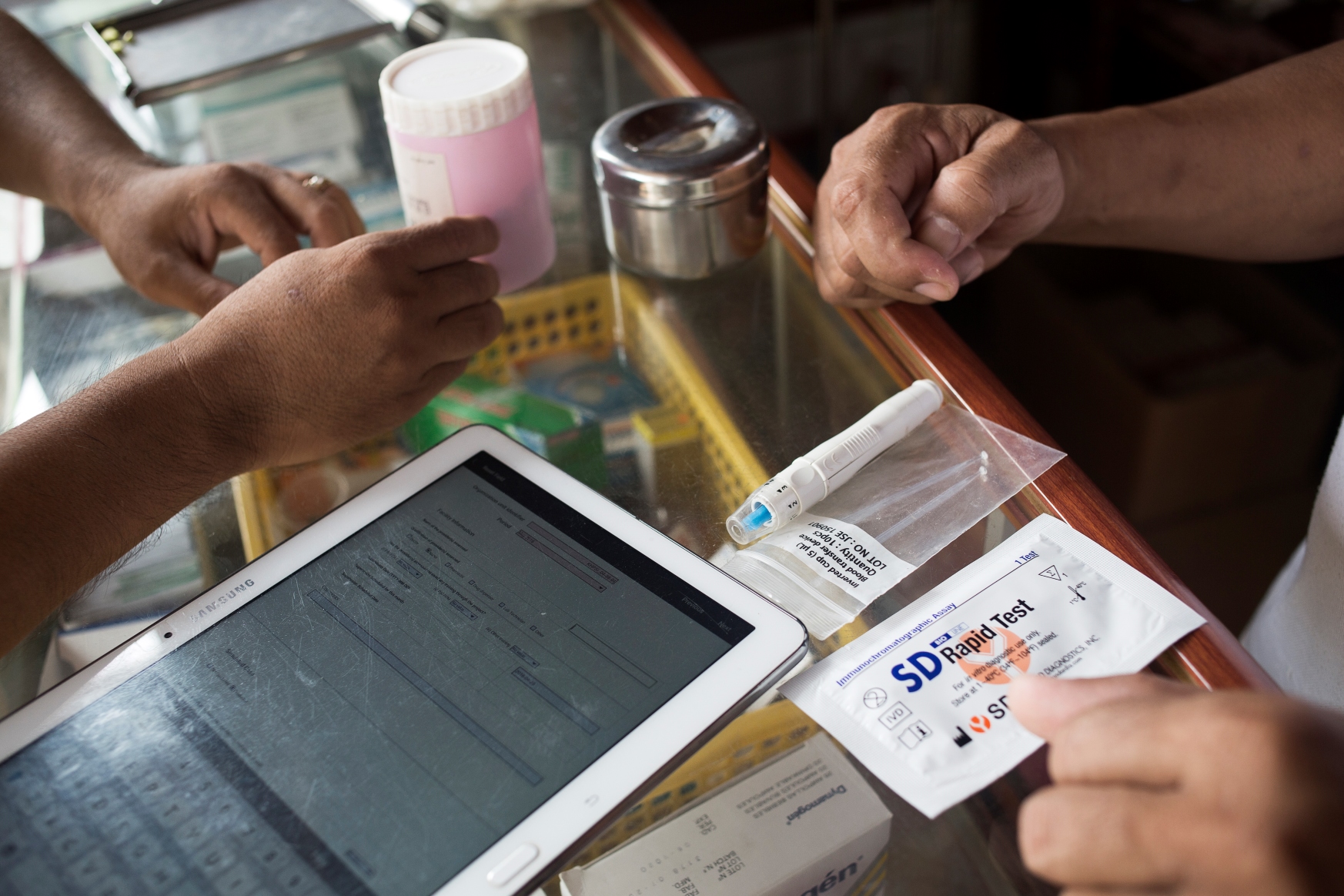
Data allows your political judgments to be based on fact, to the extent that numbers describe realities.
- Hans Rosling, in an interview with Sergej Lugovic
The Greater Mekong Subregion (GMS) lies within the Asia Pacific region and is a focal point for the ambitious goal of regional malaria elimination by 2030. Notably, the region has witnessed a commendable 88% reduction in malaria cases from 2012 to 2021. However, individual challenges for countries persist.
- In Thailand, there has been an alarming rise in malaria cases near the Myanmar border, jumping from 3,000 in 2021 to 15,000 in just the first half of 2023. This jump could be exacerbated by the influx of migrants from Myanmar and dominance of the P. vivax strain.
- Malaria has not yet been established as a notifiable disease in Cambodia and private service providers are not able to report and refer cases on time.
- In Lao People’s Democratic Republic (Lao PDR), the malaria programme grapples with the sustainability of Volunteer Malaria Workers and adoption of integrated disease packages.
- Myanmar's malaria control efforts are hindered by the ongoing civil unrest, with delayed reporting and outbreaks in conflict-prone areas.
- Finally, Viet Nam faces the continued peril of antimalarial drug resistance, alongside a sharp decrease in malaria resources at the provincial level in light of mergers between provincial malaria centres and provincial centres for disease control and prevention.
Malaria in the GMS undeniably requires innovative strategies for its elimination. In this pursuit, the introduction of sub-national dashboards has emerged as a powerful and promising solution. Subnational dashboards have been used in the GMS to pinpoint these pockets of remaining malaria cases and better localize elimination efforts.

Examples of subnational malaria dashboards
The GMS countries are utilizing subnational malaria elimination dashboards to tailor strategies specific to local needs. These dashboards collectively enhance real-time monitoring, timely interventions, and strategic decision-making across these nations.
- Cambodia utilizes an intricate surveillance system, which classifies cases by origin and foci by receptivity. Their online Malaria Information System not only offers comprehensive dashboards on key aspects but also supports mobile accessibility.
- Myanmar emphasizes on improving its malaria surveillance dashboards for all administrative tiers, ensuring streamlined elimination efforts across townships.
- Lao PDR's focus lies in harnessing the DHIS2 dashboards by building the skills of subnational teams to extract and analyze data.
- Thailand stands out with a public dashboard providing intricate data on both national and subnational levels.
- Viet Nam has implemented the web-based (eCDS-MMS) system since July 2020, in which elimination data are collected in real-time.
- The Malaria Elimination Database (MEDB), founded in 2014, has been hosted by WHO Mekong Malaria Elimination Programme. All GMS countries consistently submit health facility or subdistrict-level data on a monthly basis to the DHIS2 system integrated with MEDB. The dashboards are accessible to national and subnational malaria programmes and other GMS partners.

Role of sub-national dashboards for malaria elimination
The subnational dashboards rely on field-level indicators instead of the more general national metrics, and are characterized by their detailed, localized, and regularly updated data. This granularity is invaluable, allowing for the creation of tailored strategies that cater exclusively to the nuances of each region with a shorter lead time.
The monitoring enabled by these dashboards can bring about a myriad of benefits:
- Empowering health workers to accurately pinpoint malaria hotspots, leading to timely, precise and decisive actions.
- Monitoring the progresses towards elimination including border malaria.
- Recognizing inherent regional variations, thereby paving the way for devising strategies that are not only effective but also resonate deeply with local realities.
- Understanding which areas necessitate immediate attention, ensuring resources are channeled in the most efficient manner, optimizing efforts towards malaria elimination.

The path forward
As the GMS remains committed to the goal of eliminating malaria by 2030, the importance of subnational dashboards cannot be understated. They act as a beacon, highlighting precise areas of concern and providing a roadmap for targeted interventions. Through these dashboards, countries are better equipped to navigate the unique challenges from drug resistance to civil unrest. As 2030 approaches, the synergy between innovation and determination, embodied in these dashboards, will be a defining factor in the region's fight against malaria.
The Greater Mekong Subregion is a natural economic area bound together by the Mekong River, covering 2.6 million square kilometers and a combined population of around 326 million. The GMS includes Cambodia, Lao People's Democratic Republic, Myanmar, Thailand, Viet Nam and Yunnan Province in the People's Republic of China (malaria-free since 2021).
